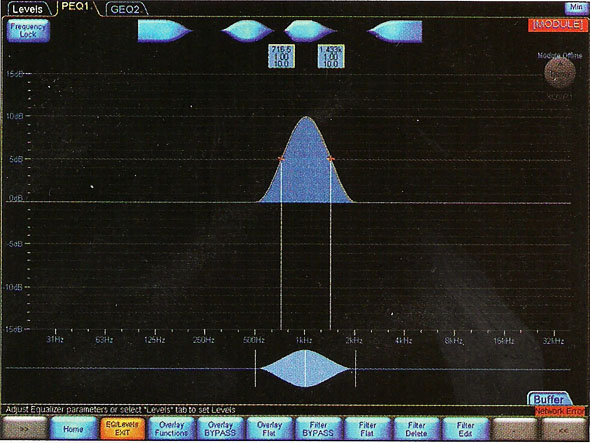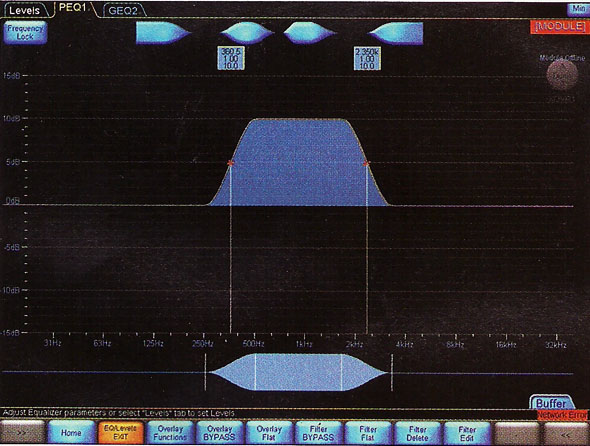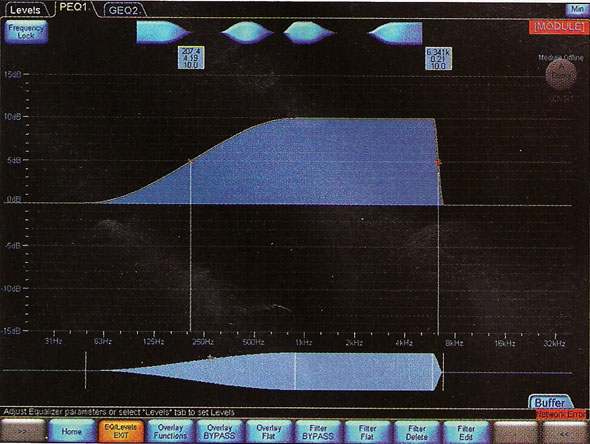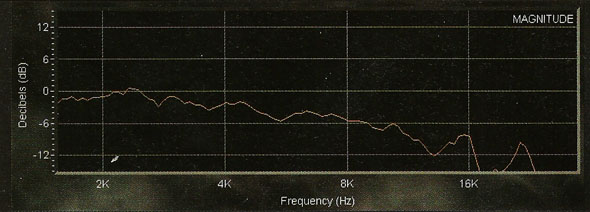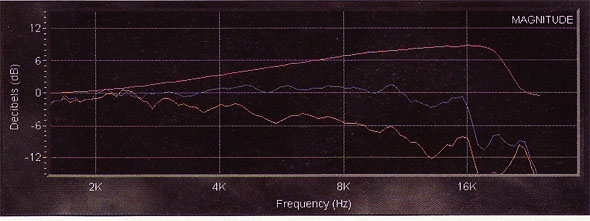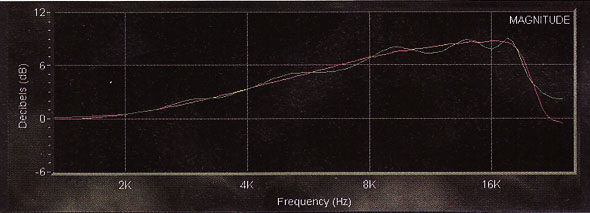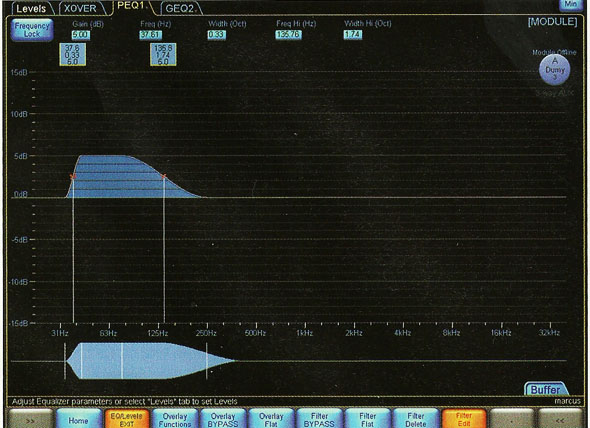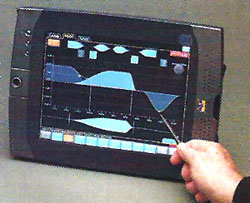
Selecting a frequency range with multiple filters does not produce a rippled response, the filters sum flat.
Desired selectivity is achieved.
If you pull one filter to 6 dB boost and the neighboring filter to 6 dB cut, you will achieve the desired response intuitively.
.
.
THE MESA FILTER
Contour also introduces an entirely new filter type called the Mesa Filter, which is intended to supersede the traditional parametric equalizer.
Figure 6 shows that the Mesa Filter starts out looking like a traditional parametric filter.
However, Figure 7 depicts that the two sides of the function can be controlled independently.
One side may be pulled down in frequency, while the other side remains at the same frequency.
Finally, Figure 8 shows that each side’s bandwidth may also be adjusted independently to produce asymmetrical functions. These examples translate into a device that is well suited for rapidly optimizing the frequency response of loudspeakers.
A single Mesa filter can rapidly optimize high frequency roll off, without introducing out-of-band frequency emphasis. Again measuring with Smaaart, let’s look at the response of a high-frequency transducer. Ideally, we’d like to flatten this response at the listening position.
Let’s add a Mesa Filter to optimize the response (Figure 9) and then show its optimized response (Figure 10) in blue, resulting from the Mesa Filter.
The Mesa Filter’s response is shown in pink. In order to achieve the same result with traditional equalization, we attempted to match the Mesa Filter’s response with a parametric filter bank. We used all six available filters to approximate the Mesa Filter’s response (Figure 11).
As you can see, we can make an adequate match; however, it took all of the available filters to do it (not to mention more than a half-hour tweaking the knobs just right to do so).
One could argue that one parametric section can perform a similar function. This is true, but a symmetrical function will emphasize frequencies outside of the pass band of the transducer. Such emphasis has deleterious effects contributing to audible distortion artifacts, as well as reduced life expectancy for the driver.
The Mesa Filter also provides benefit at low frequencies. Low-frequency bass management can be applied using a non-symmetrical Mesa Filter function, in order to increase output within the pass band of the loudspeaker while minimizing over-excursion of the driver (Figure 12).
In this example, a Mesa Filter is used to add some low-frequency boost within the subwoofer frequency range. A smooth transition is used at the higher side of the function to create a seamless transition between the main system and the subs. The subs are tuned to 40 Hz, so excursion increases dramatically below the 40 Hz resonance. To avoid over-excursion at frequencies lower than 40 Hz, a sharp transition is used on the low side of the Mesa Filter. The Mesa Filter provides the desired low frequency boost, without damaging the loudspeaker in the process.
Lake Contour provides new tools that allow the sound engineer to quickly and intuitively make adjustments.
In 2003, when this article was written, Justin Baird was product manager for Lake Contour, while Bruce Jackson was senior vice president of research for Lake.
Related on PSW:
Bruce Jackson, A Life In Sound
PSW Live Chat With Bruce Jackson
Video: Bruce Jackson Interview At Integrate 2010

